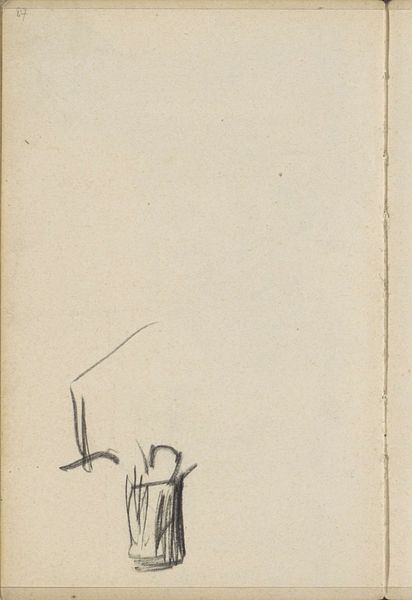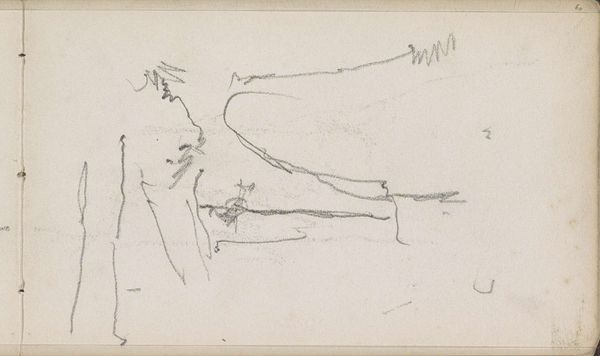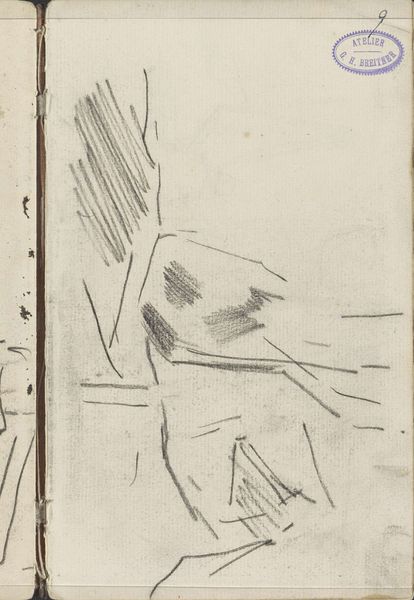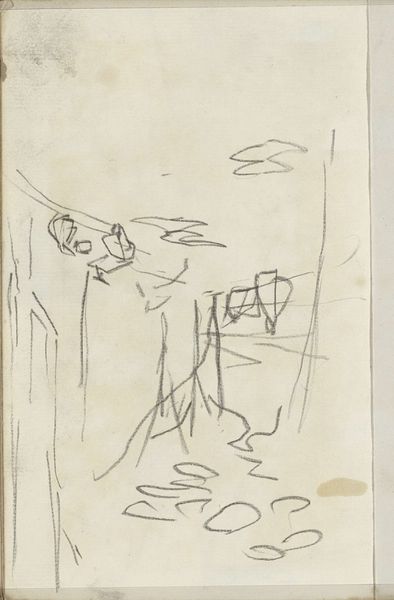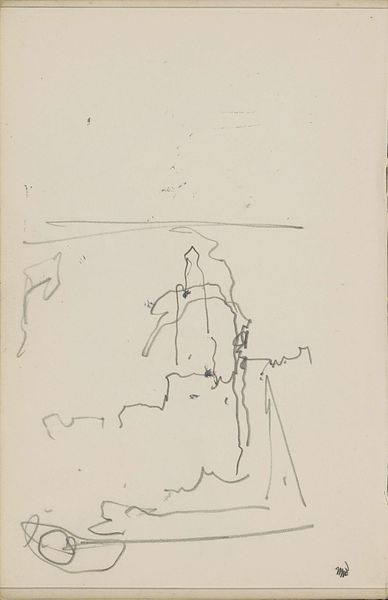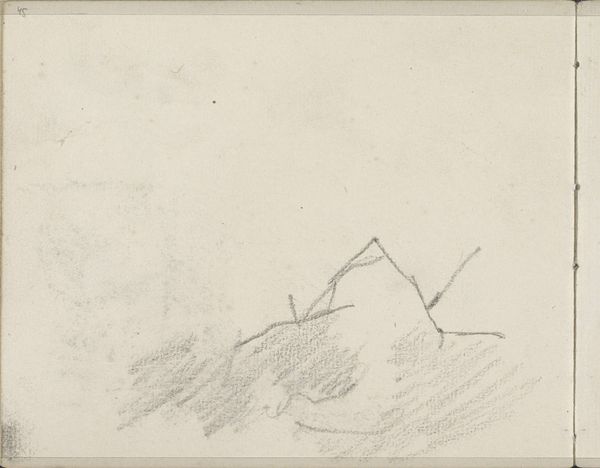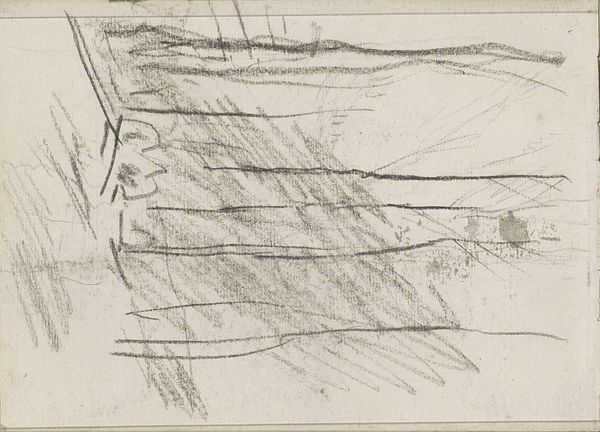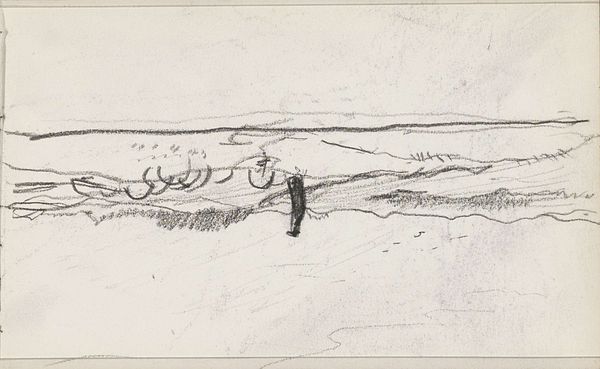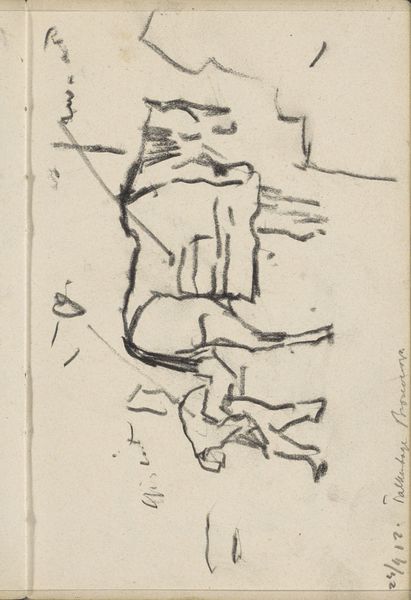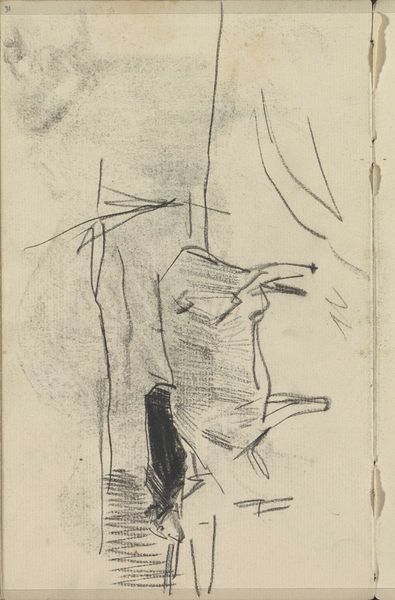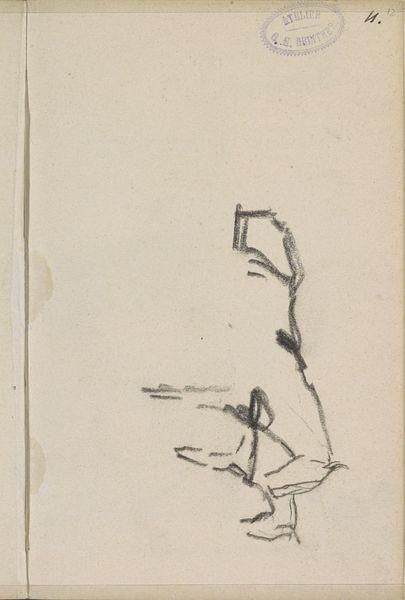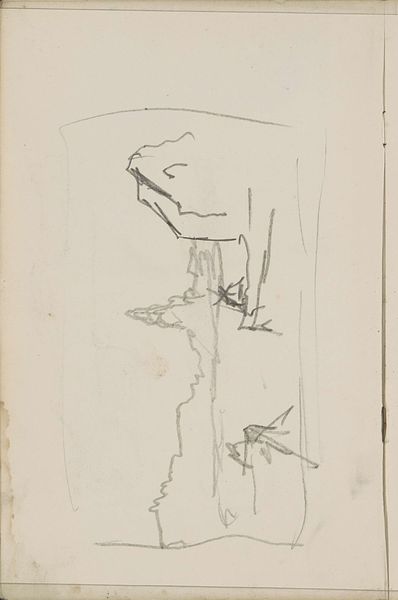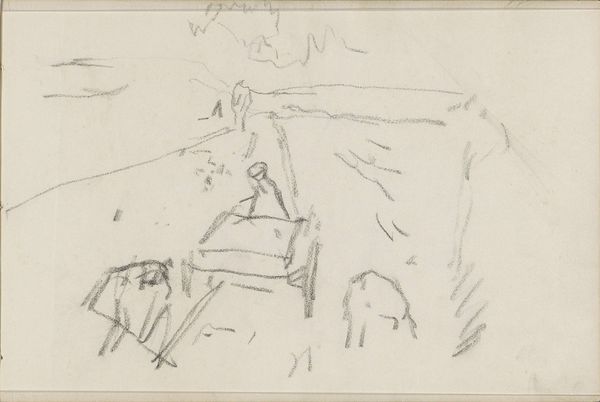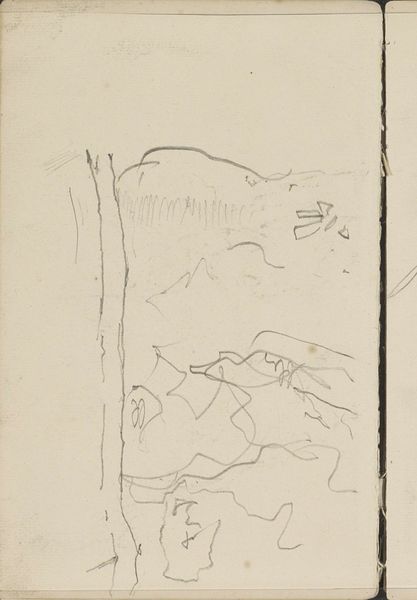
drawing, paper, graphite
#
drawing
#
impressionism
#
figuration
#
paper
#
graphite
Copyright: Rijks Museum: Open Domain
Editor: This drawing, "Standing Woman, Seen From the Back" by George Hendrik Breitner, was created between 1883 and 1885, using graphite on paper. It's interesting how the artist captures the human form with such economy of line. What do you see in this piece? Curator: The drawing invites us to consider the social and historical context in which it was made. Breitner was part of a generation grappling with representing modern urban life. This sketch, with its almost clinical depiction, sidesteps idealized portrayals of women that were common at the time. Do you notice how the averted gaze avoids sentimentalism? Editor: Yes, it's like we're observing a candid moment rather than a posed subject. It makes me wonder about the role of women in Amsterdam at that time. Curator: Exactly. Consider the burgeoning middle class and their complex relationship with societal expectations. Was Breitner attempting to depict an independent working woman, or perhaps alluding to a sense of anonymity within the growing city? His sketches often focused on the working class, placing their experiences in a public discourse largely dominated by bourgeois ideals. Editor: That's a different perspective than what I had originally, it helps in understanding the context. The artwork becomes not just about form but also a kind of social commentary. Curator: Precisely! And it prompts questions about the institutions displaying such works. How did displaying images of the working class reshape public perceptions and conversations within the art world and society? Editor: Thinking about art as part of these larger conversations makes me appreciate it in a deeper way. Curator: Agreed, recognizing how artistic expression intersects with power dynamics encourages us to investigate art's crucial function in molding communal knowledge.
Comments
No comments
Be the first to comment and join the conversation on the ultimate creative platform.
